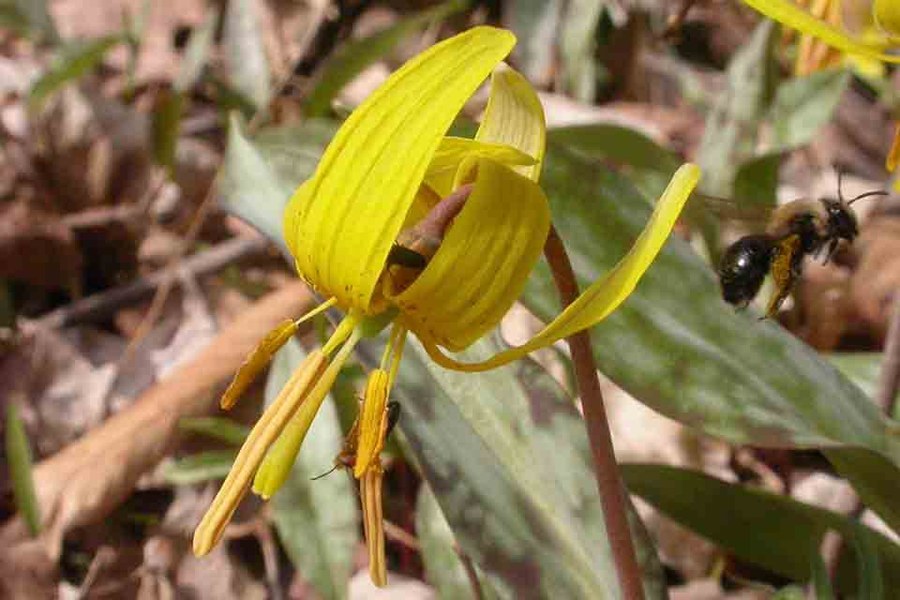Posted: April 30, 2021
Early spring is the time to think about native bee pollinators.

Trout Lily or Dogtooth Violet - Erythronium americanum and bee. Photo: D. Stelts, Penn State
There are over 400 species of native solitary bees in PA. Many of them nest in the ground (NOT to be confused with ground nesting yellow jacket wasps!) and many others nest in hollow stems above ground. Solitary bees do not defend a communal nest and are not aggressive. Male bees do not even have a stinger. Native bees are much more effective pollinators than honeybees because they lack the well-developed "pollen baskets" that honeybees have. Pollen clings lightly to the hairs which cover the bee and easily fall off on new flowers as she travels from plant to plant.
Solitary bees become active when temperatures reach 50 degrees during the day. They need to find flower nectar for energy and pollen for fats and proteins as soon as possible because the stored food in their nest tube is long gone and they are literally starving. You can help our native bees by planting flowers that bloom in the very early spring. The species crocus are excellent. Dandelions are outstanding pollinator flowers. Learn to love them!
~Sandy Sweeney
Penn State Extension Master Gardener since 2016 in Montgomery County

